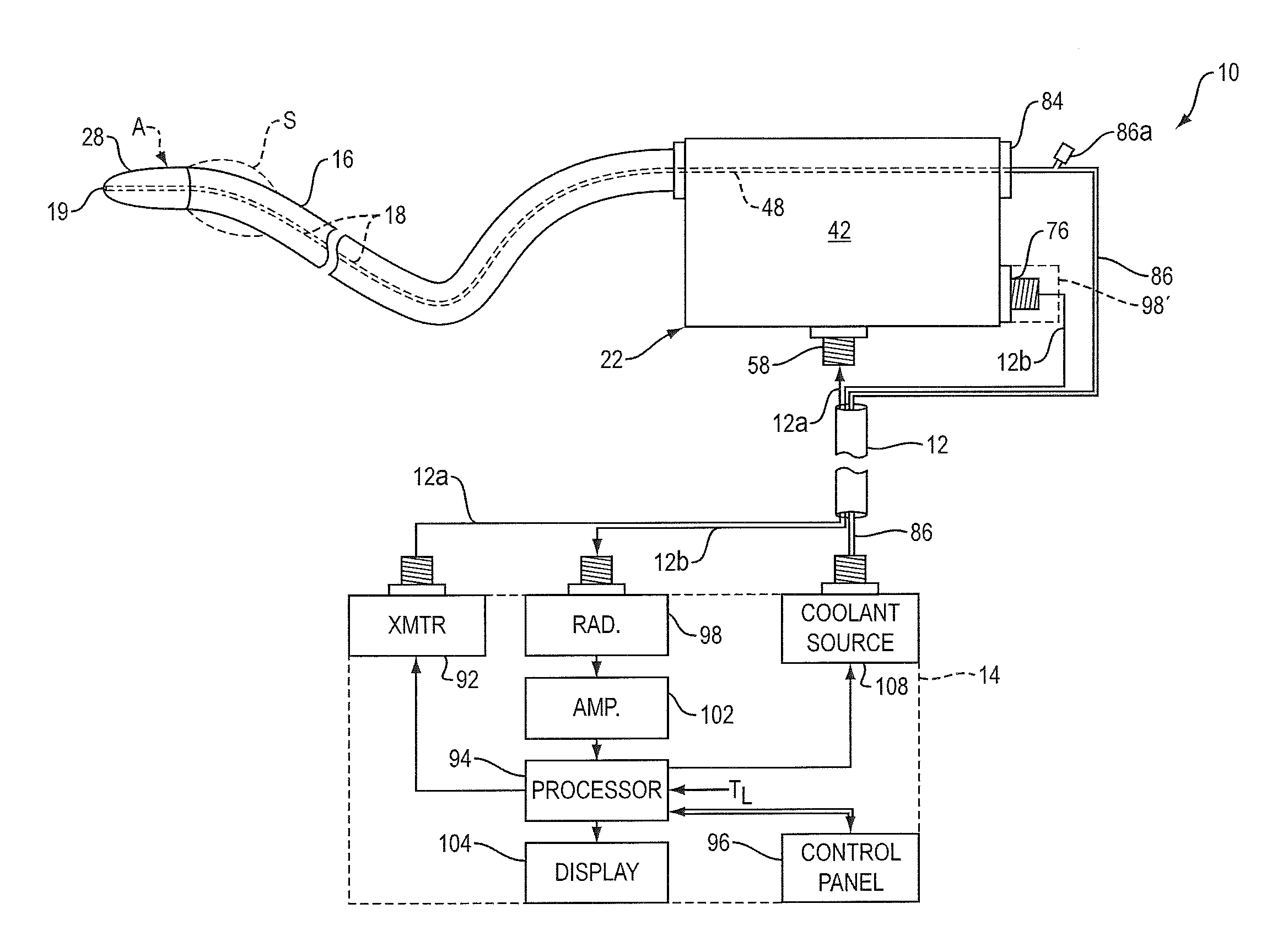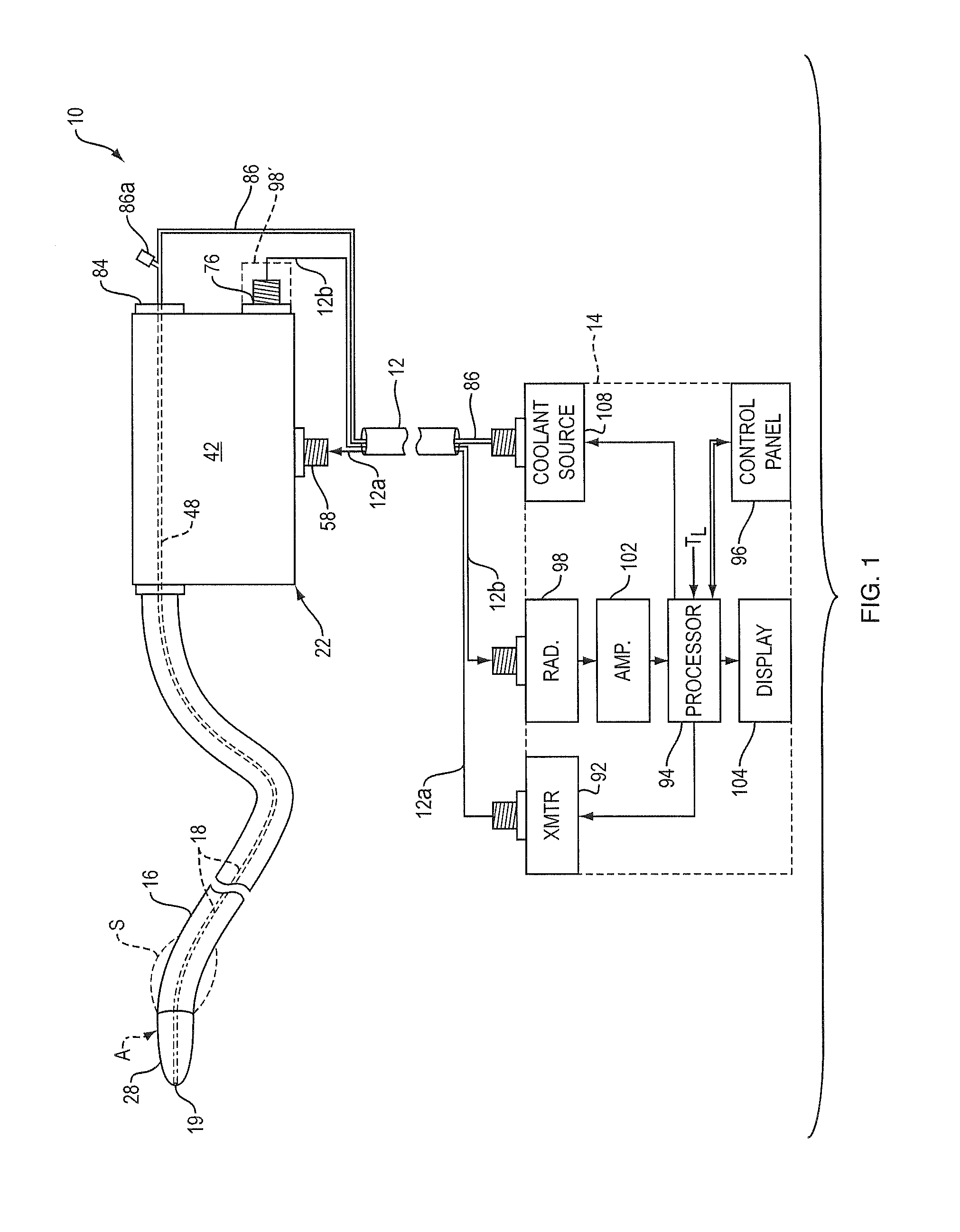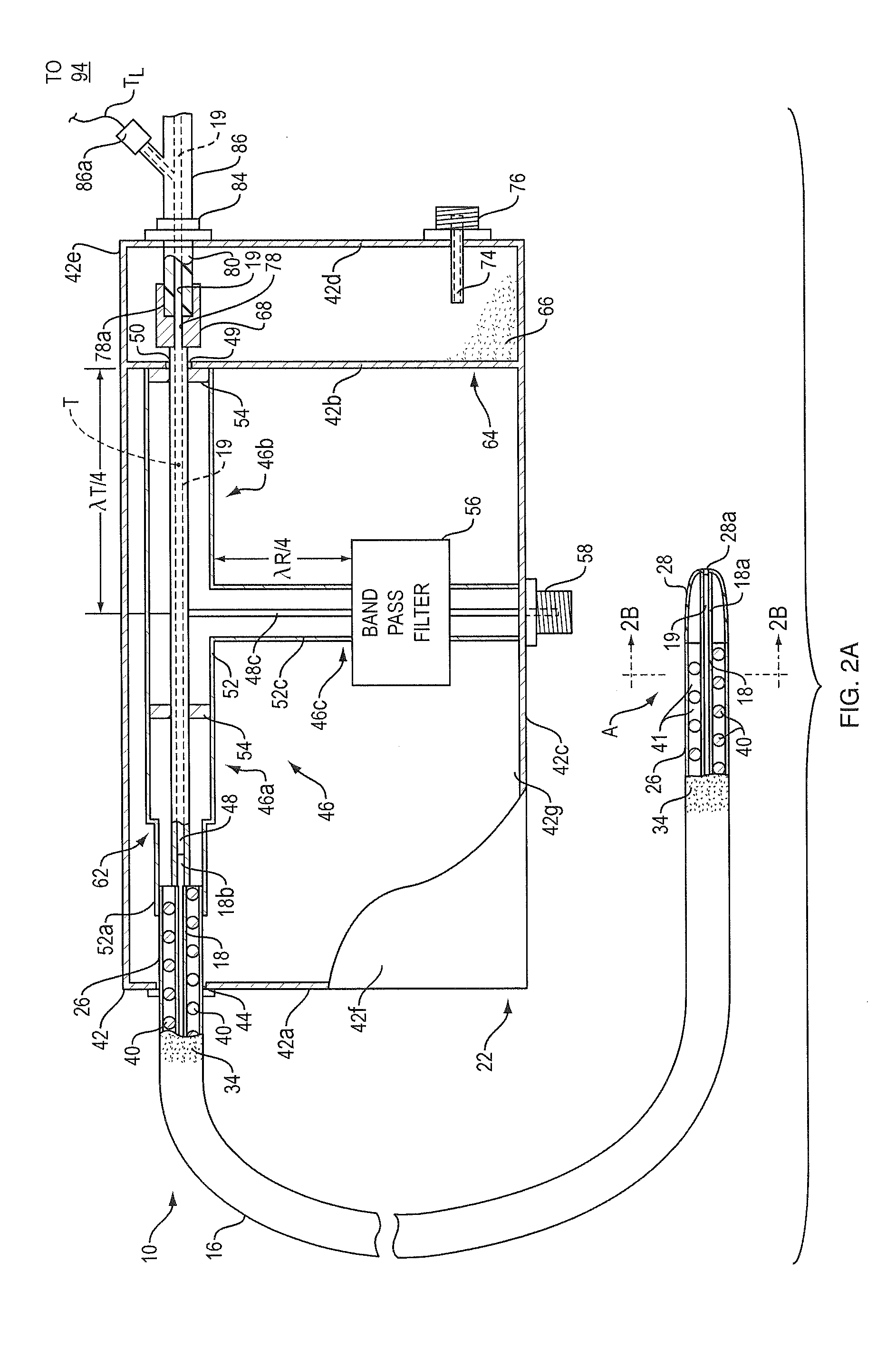Heating/sensing catheter appratus for minimally invasive applications
a catheter and sensor technology, applied in the field of medical catheter devices, can solve the problems of more difficult catheter threading along narrower blood vessels in the body, sharp turns in such vessels, and other body passages, so as to reduce the loss of component insertion, prevent excessive heating of the cable, and reduce the impedance of the cable
- Summary
- Abstract
- Description
- Claims
- Application Information
AI Technical Summary
Benefits of technology
Problems solved by technology
Method used
Image
Examples
Embodiment Construction
[0035]Referring to FIG. 1 of the drawings, the present catheter apparatus comprises an antenna catheter shown generally at 10 connected by a cable 12 to an external control unit 14. Catheter 10 includes a relatively long, e.g. 115 cm, very flexible cable 16 which includes a center conductor 18 extending the entire length of the cable and forming an antenna A at the distal or probe end of the cable. The illustrated antenna A is a monopole, but it may have other forms such as a helix as in U.S. Pat. No. 5,364,336, whose contents hereby is incorporated herein by reference.
[0036]In accordance with the invention, center conductor 18 is formed as a thin-wall, e.g. 0.004 inch, tube of soft copper so that it is quite flexible and defines a fluid pathway 19 which extends the entire length of the cable. For example, that center conductor may have an OD of 0.024 inch. The larger diameter, hollow center conductor minimizes the current density thereon for a given cable diameter. This, in turn, m...
PUM
 Login to View More
Login to View More Abstract
Description
Claims
Application Information
 Login to View More
Login to View More - R&D
- Intellectual Property
- Life Sciences
- Materials
- Tech Scout
- Unparalleled Data Quality
- Higher Quality Content
- 60% Fewer Hallucinations
Browse by: Latest US Patents, China's latest patents, Technical Efficacy Thesaurus, Application Domain, Technology Topic, Popular Technical Reports.
© 2025 PatSnap. All rights reserved.Legal|Privacy policy|Modern Slavery Act Transparency Statement|Sitemap|About US| Contact US: help@patsnap.com



